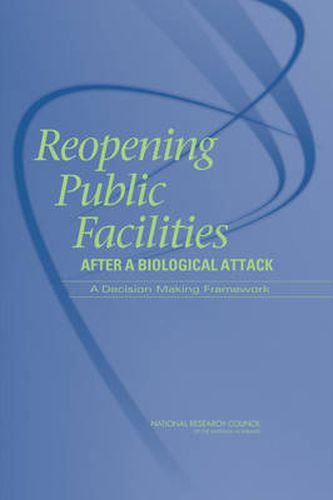Readings Newsletter
Become a Readings Member to make your shopping experience even easier.
Sign in or sign up for free!
You’re not far away from qualifying for FREE standard shipping within Australia
You’ve qualified for FREE standard shipping within Australia
The cart is loading…






The anthrax attacks in fall 2001 spurred an extensive and costly decontamination effort where many decisions had to be made about which sites required cleanup, what method to use, how to determine the effectiveness of the cleanup, and how clean the building had to be for reoccupation. As part of a project funded by the U.S. Department of Homeland Security (DHS), and managed by Lawrence Livermore National Laboratory, the National Research Council was asked to consider the criteria that must be met for a cleanup to be declared successful, allowing the reoccupation of a facility. The report finds that efficiently sampling and characterizing a pathogen is critical for choosing the best remediation strategy.However, there should be no universal standard for deciding when a building is safe to re-enter because varying pathogen amounts and characteristics could require different strategies. The report offers a flowchart for decision-makers that includes questions about the characteristics of the pathogen; how far it has spread; whether it is transmissible between humans; and, how long it will survive to pose a threat. The report also recommends that a risk-assessment approach be adopted as part of a strategy for achieving a socially acceptable standard for cleanup.
$9.00 standard shipping within Australia
FREE standard shipping within Australia for orders over $100.00
Express & International shipping calculated at checkout
The anthrax attacks in fall 2001 spurred an extensive and costly decontamination effort where many decisions had to be made about which sites required cleanup, what method to use, how to determine the effectiveness of the cleanup, and how clean the building had to be for reoccupation. As part of a project funded by the U.S. Department of Homeland Security (DHS), and managed by Lawrence Livermore National Laboratory, the National Research Council was asked to consider the criteria that must be met for a cleanup to be declared successful, allowing the reoccupation of a facility. The report finds that efficiently sampling and characterizing a pathogen is critical for choosing the best remediation strategy.However, there should be no universal standard for deciding when a building is safe to re-enter because varying pathogen amounts and characteristics could require different strategies. The report offers a flowchart for decision-makers that includes questions about the characteristics of the pathogen; how far it has spread; whether it is transmissible between humans; and, how long it will survive to pose a threat. The report also recommends that a risk-assessment approach be adopted as part of a strategy for achieving a socially acceptable standard for cleanup.